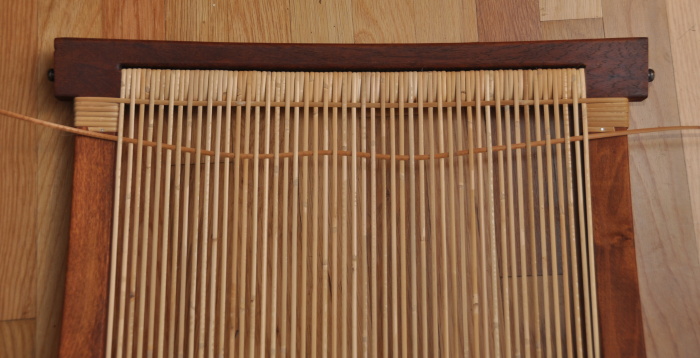
Do the second horizontal weave in the same manner as the first, only this time start out by going UNDER the first vertical strand. Again, double check your weaving to make sure you did not make a mistake.
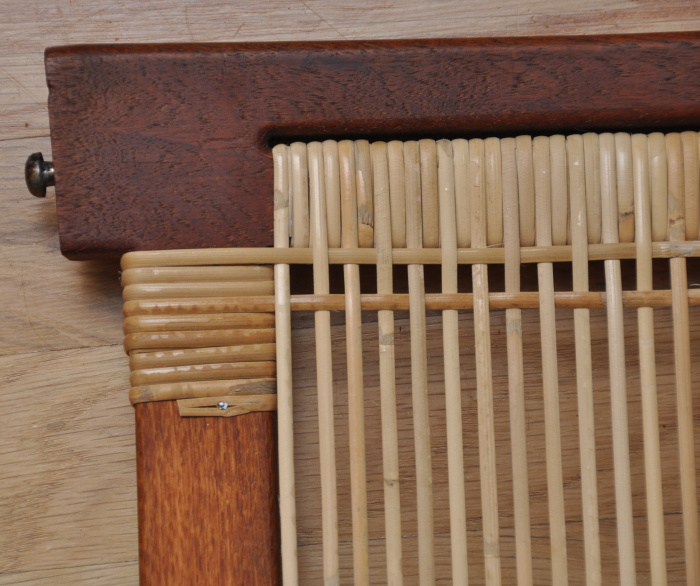
This image shows the wrapping on the left side of the chair frame completed, and nailed in position. You can also see that there are TWO wraps spaced between each horizontal weave, rather than just one. That is why we are now making six wraps with the horizontal strands, rather than the four wraps we did with the vertical strands.
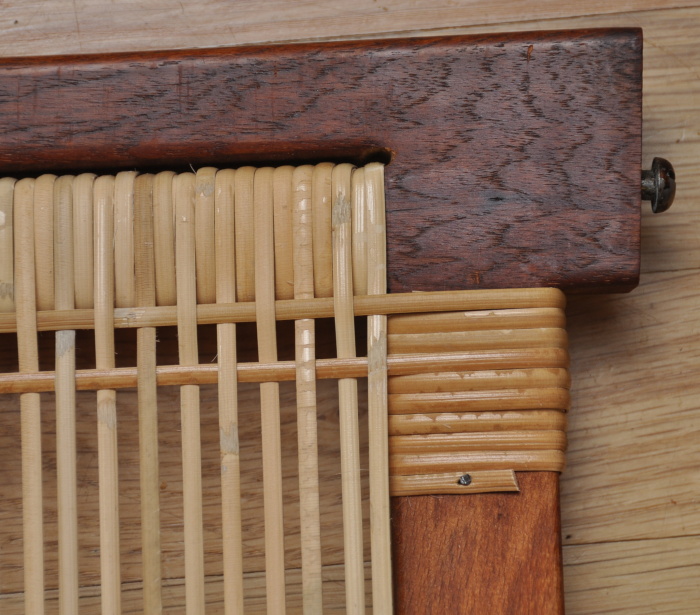
The second horizontal weave, nailed in on the right side of the chair frame.
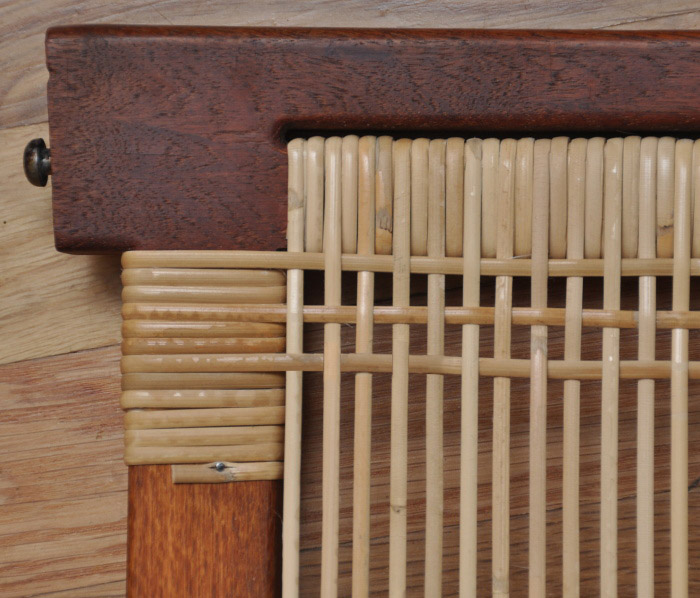
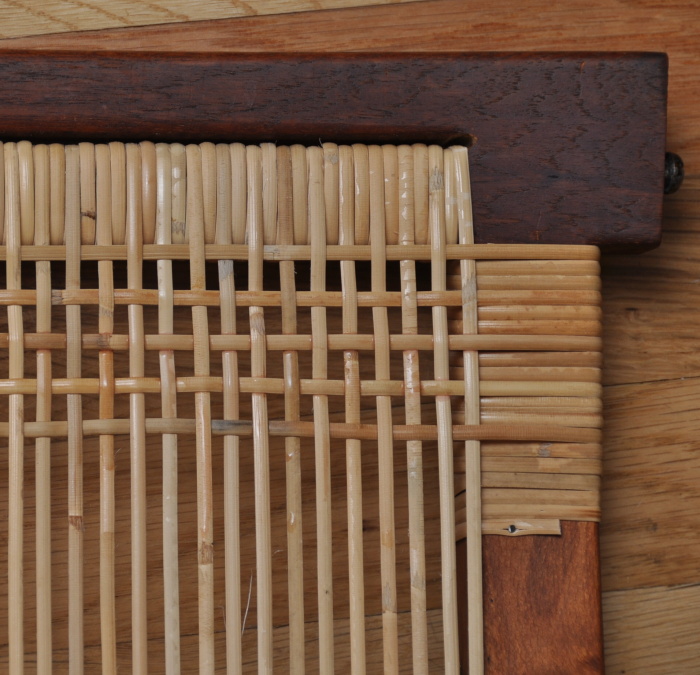
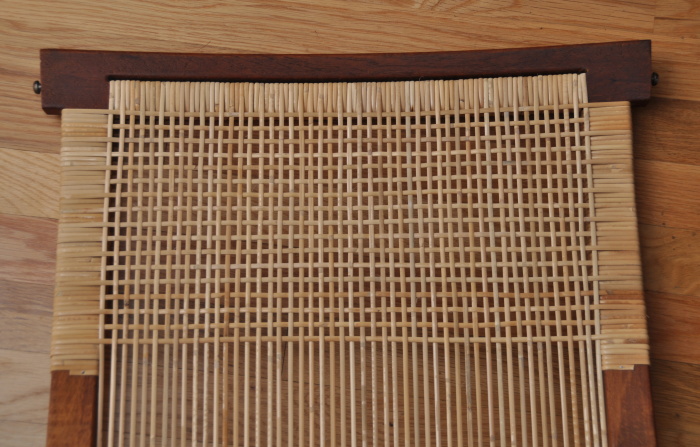
This process has been repeated now until not quite half of the horizontal weaves are completed. It can take a lot of time.
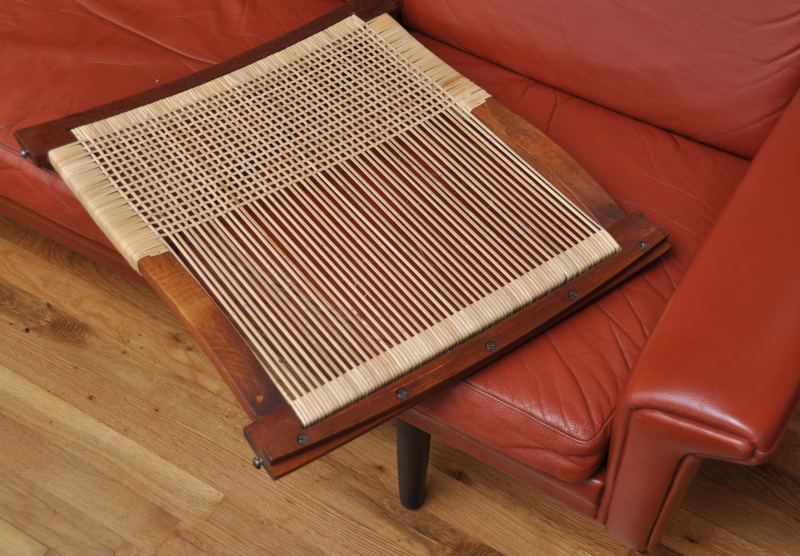
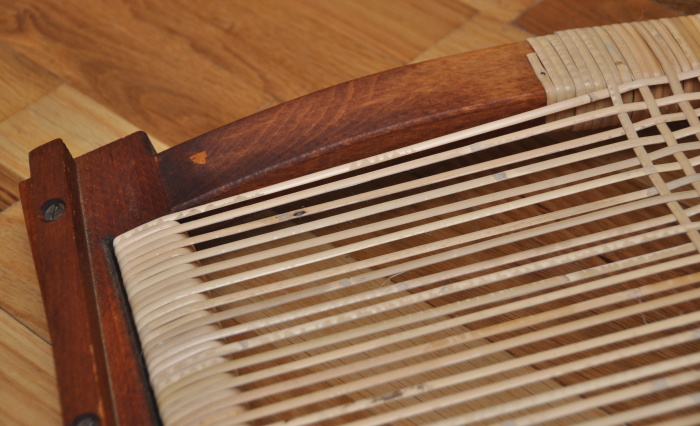
One complication with the Hvidt chair is that the chair’s back rest has a curve in the frame near the bottom, which you can see in this image. This means that the vertical warp strands can be a little harder to access in this area when you are trying to weave the horizontals through them. The horizontal weaving will draw these other strands up though, to match the curve of the seat frame. This is another reason to not get the warp strands stretched too tight when you are doing them, since it would put a lot of stress on them to be pulled upward to match the curve of the chair frame if they are already very taut to begin with. The last thing you want is to have a warp strand snap apart when you are weaving.
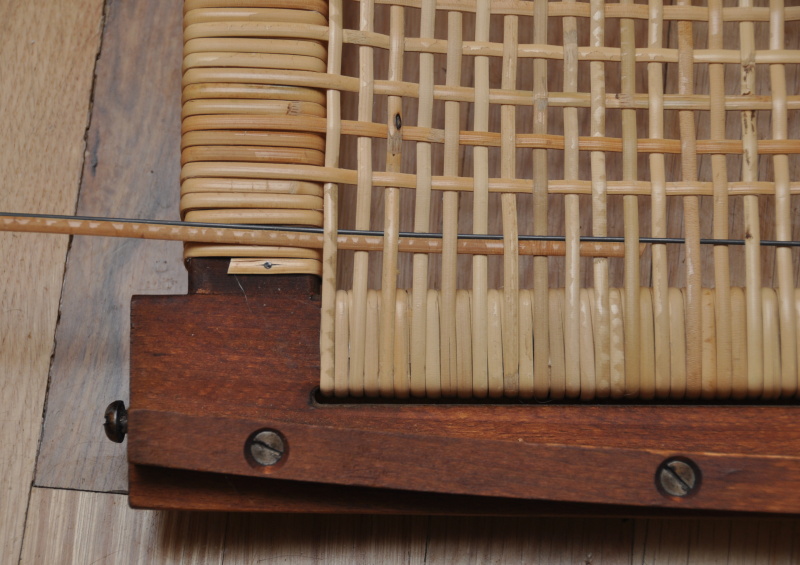
Once you are putting in the final horizontal weaves, the warp strands can get very taut, making it difficult to work the horizontal weaves over and under them. I used a length of spring steel wire, working it under the wraps, then pushing a piece of rattan through alongside the wire. There is also a special tool sold for this purpose, called a "Steamer" which is a long flat piece of steel that can be worked over and under the rattan, and can then be used to pull a piece of rattan back through. You can find these for sale online at chair weaving supply houses.